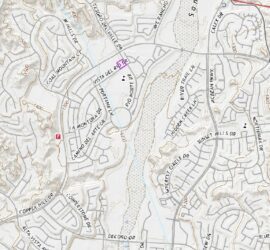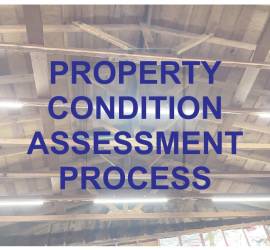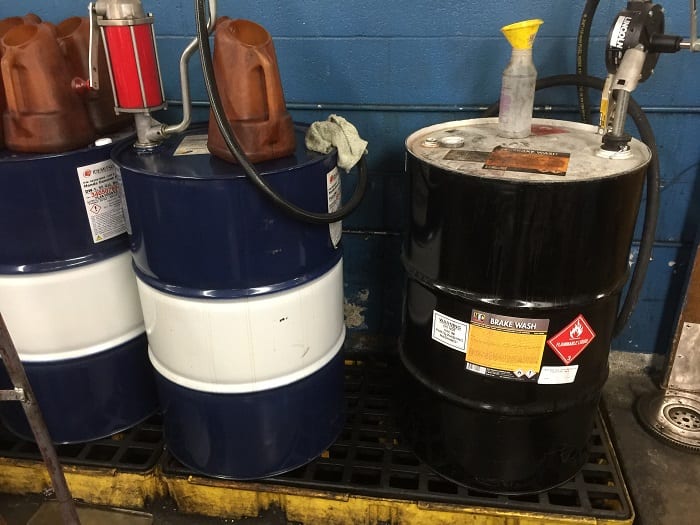Human Health Risk Assessment (HHRA)
A Human Health Risk Assessment (HHRA) evaluates the potential dangers to people where there may be some exposure to chemical contaminants in soil, groundwater, ambient air, or soil gas. Typically, the recommendation for an HHRA stems from the Phase 1 Environmental Site Assessment process. However, the awareness for indoor air quality testing and health risk analysis can arise after any level of contamination is apparent in the subsurface. A Human Health Risk Assessment can range from a simple screening level comparison to complex modeling. In fact, Phase 2 ESA screening level comparisons use pre-set numbers by regulatory agencies to help indicate the necessity of further investigation. Whereas the modeling process takes into account all possible receptors and exposure scenarios and determines site-specific environmental remediation goals. Updated April 9, 2024.

Phase 2 Subsurface Investigations Comprising a Human Health Risk Assessment
Sometimes, during a Phase 2 ESA, geologists discover contamination that may or may not lead to an additional investigation. This is dependent on which chemicals are found, and the levels tat that they exist. Additionally, the decision depends on the use and location of the Subject Site. To do so Environmental Professionals apply the appropriate environmental screening level numbers when making this initial comparison. And the results of the comparisons are generally a part of the Phase 2 ESA report. In fact, the report provides recommendations on the basis of these screening-level comparisons.
And if the level of contamination is compliant with concurrent regulatory agency screening levels, then a “no further action” recommendation is likely. However, if the screening level assessment shows contamination that is over these regulatory limits, then an additional investigation and remedial action planning will likely be necessary. In fact, the site may need to begin the next steps toward contamination remediation.
Hazard Identification
The first step when conducting a Human Health Risk Assessment is to properly identify all hazards. This is not the same as establishing the risk. Hazards in this case are the chemicals of concern that are known to be harmful. Risk is the probability that the chemicals will cause health problems under the given set of circumstances. Hazard identification takes place during the subsurface investigation process including the Phase 2 ESA and beyond.
The data from these investigations will help to develop a list of all chemicals of concern at the site. Certain chemicals are hazardous to the health of humans, animals, and the environment. This knowledge is an ever-expanding database that has been developed over many years of scientific research. In areas where humans live and work, the focus of hazard identification is usually on those compounds known to have adverse effects on human health, such as cancers, organ damage, and birth defects.
Impacted Media
After the hazards have been identified, it is necessary to predict who could be exposed to the chemicals, presently or in the future, and what levels of the chemical could reach people. This effort begins by looking at the impacted media to determine where the contamination source is located, how far the plume may travel, and by what means. Liquid chemicals, and even solids such as heavy metals, will move through the subsurface until they reach a non-permeable surface. Soil contamination poses the threat of exposure by direct contact, and it is also indicative of potential vapor intrusion concerns.
Not only do compounds such as petroleum products and solvents remain in the soil for some time, but they also volatilize, and then return to the surface as a gas. This can affect the indoor air quality of buildings on and around the contaminated site. While contaminated soil is problematic, it is not the media that most effectively facilitates contaminant mobility. In fact, if the contaminants reach groundwater or surface water, they can spread even more rapidly. Off-site drilling may also be necessary to determine how far the pollution has spread. But in general, groundwater information may apply in conjunction with the site-specific data, to model the spread of a contamination plume. For instance, depth to groundwater and groundwater flow direction.
Exposed Populations
Once scientists can estimate how far the pollutants can travel, it is possible to understand which people are at risk. An assessment of all general land use categories in the area is a good place to start because this will determine if people are living and working in the immediate area. If the region is mostly industrial, there is a lesser chance that many people will have constant exposure. On the other hand, if people are occupying the area regularly it is necessary to take a closer look at the specific types of buildings and residents.
When determining who may be at risk, special consideration is given to sensitive populations within the community. This includes schools, hospitals, and other places where the very young, or old, or people with underlying health issues concentrate. For businesses, it is important to consider the number of employees that may be susceptible to exposure, on a part-time and full-time basis. Another consideration is the method of exposure. For instance, whether people are inhaling chemicals as a vapor, ingesting it through food and water, or absorbing it through the skin by direct contact.
Different people will be at risk for different levels of exposure. Thus, a Human Health Risk Assessment may include different scenarios that correlate to varying degrees of risk. The most conservative actions are on the basis of the “High End” exposure spectrum. As a conservative measure, this accounts for the most sensitive people, with exposure to the highest potential levels of contamination.
The Toxicology of a Human Health Risk Assessment
The science of determining the effects of chemicals on people is called “Toxicology.” And the next part of an HHRA aims to assign specific risks in association with different levels of exposure. Using all available scientific information to date, the Environmental Protection Agency (EPA) publishes the levels of chemicals that are known to produce harmful side effects. Furthermore, the California EPA (CalEPA) publishes additional guidelines that sometimes differ from the EPA Regional Screening Levels (RSLs).
Comprising the most recent data regarding hundreds of toxins, these are the levels used by regulatory agencies to determine compliance for contamination sites. These recommendations arise from decades of research. And they undergo revision and expansion regularly (since their initial appearance in the 1990s). The toxicological data against which chemical contamination measures are an integral aspect of the Human Health Risk Assessment.
Challenges of a Human Health Risk Model
Scientists who study and practice toxicology face specific challenges that should be acknowledged when discussing the process of an HHRA. First, the sheer number of chemicals that must be studied is vast, and new chemical compounds are regularly synthesized, and often found to be toxic years later. One example of this is the case of PFAS and C8. Once widely used, it was discovered to be highly toxic and now presents contamination problems across the globe.
Another challenge presented to toxicologists is the need for reliable data from validated studies. The problem is that data from human exposure is limited and hard to re-create in a laboratory setting. Animal testing has its limitations when it comes to applicability and questions about morality. Fortunately, scientific advancements have led to a reduced need for human and animal studies. It is increasingly possible to create an accurate toxicological model based on exposing a tissue sample or individual cell to a chemical compound. Researchers may then conclude the effects of systemic exposure based on this smaller-scale representation.
Risk Characterization of an HHRA
The final stage of an HHRA uses all information gathered about the hazards at a site and the surrounding area, combined with the available toxicological data, and possible exposure scenarios, to describe the risks associated with the contamination. Each step of the HHRA may have an individual risk characterization written for each part of the process. But only by combining all these components can an overall risk characterization be written for the project.
The final risk characterization is a summary of all findings from the investigation. The conclusions are an effort to assign a risk value to the situation that will help to inform better decision-making. The Human Health Risk Assessment will, after all, apply to determine what actions are mandatory for human health and safety. If remediation is necessary, the HHRA will help to formulate the goals of the clean-up effort. Conversely, the HHRA may conclude that the risks are not such that warrant aggressive remediation. Nonetheless, an appropriate Remedial Action Plan can then take place using the recommendations of the HHRA.
Limitations of a Human Health Risk Assessment
The process of conducting an Human Health Risk Assessment relies on reasonable assumptions to assess the situation as accurately as possible. There might be variables at play that can affect the outcome in unforeseeable ways. And indeed some variables may remain unforeseeable through the conclusion of the HHRA. Hazard identifiers aim to delineate the extent of subsurface contamination with a finite amount of information. And toxicologists have the professional responsibility to make general predictions about human responses to chemicals. At the same time, environmental professionals must understand that the research and resulting data sets can never be perfect. As a result, there are uncertainties with any HHRA.
Risk assessors have the responsibility to use all available information to make a complex analysis of a difficult situation. Accordingly, it is important to have an environmental professional conduct a risk assessment at any property subject to contamination. Only then can the stakeholders inherit the best possible information to base decisions on.
Authors:
Written By: Michael J. Sabo (Project Geo-Scientist)
Co-Written By: Adam A. Kaligi, PG (Professional Geologist)







